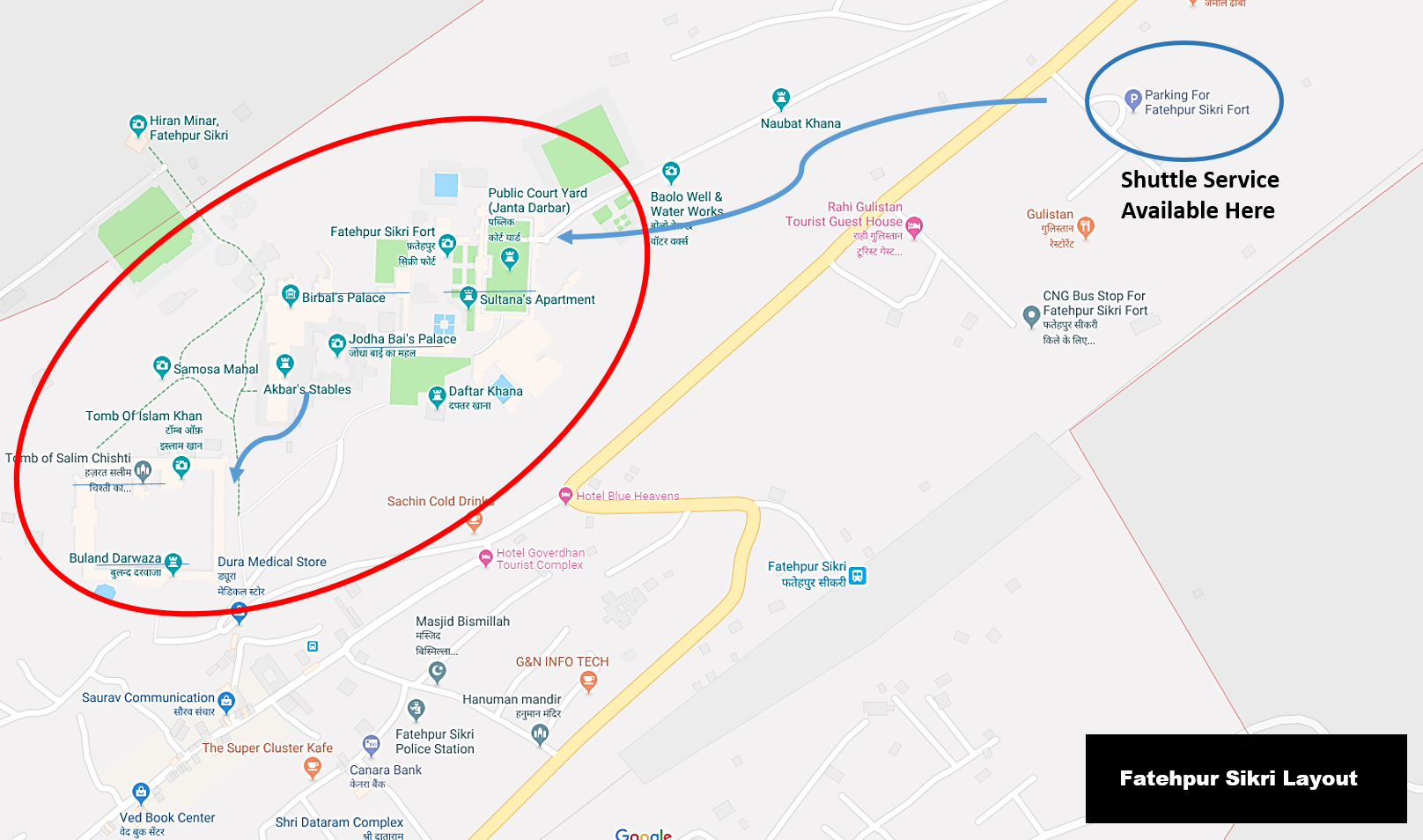If there is one defining image of India that is recognizable worldwide then it would be that of The Taj Mahal. Identified by epitaphs such as “The Monument of Love”, “7th New Wonder of the world’ and so on, this marble marvel is often the #1 item on the bucket list of Indian tourism.
An estimated 7 to 8 million (!) people visit Agra every year to see the Taj Mahal. And while the mausoleum to undying love is often the highlight of the trip, there are other architectural gems to discover in Agra. After all, it was the capital of the Mughal empire for a long time and is steeped in history.
We recommend 2 full days to enjoy the sights of Agra and here is what we suggest that what you do.
Day 1: Taj Mahal, Akbar's Tomb & Agra Fort
Start with Sunrise at the Taj Mahal
The Taj Mahal is glorious at any time of the day. However, if you want to avoid the crowds, the heat and get excellent photographs, then we suggest going there early in the morning. As the sun rises the rays bounce off the ivory marble, creating an orangish otherworldly glow.
I still remember the first time I saw the Taj Mahal, worried that the hype might not live up to reality. I remember apprehensively following the line of tourists from the entrance to South Gate. A sudden hush fell on the crowd as we entered the arches of the South Gate and the Taj appeared in front of our eyes.
I think what really gets you is the scale, symmetry and the sheer brightness of it. And then the view of the gardens, the reflecting pools, and the walkways add to the wonderful vista before your eyes.
The history and architecture of Taj Mahal are famous enough, so I won’t rehash it here. The most important thing to know is that the Mughal Emperor Shah Jahan built this mausoleum in memory of his beloved wife, Mumtaz. They are both buried deep in the basement and the actual graves are off limits. However, at the visitor’s level are two symbolic tombs enclosed inside an open chamber decorated with intricate marble artwork. One can peek inside the gaps in the carving to get a glimpse of the marble coffin and appreciate the detailed inlay work.
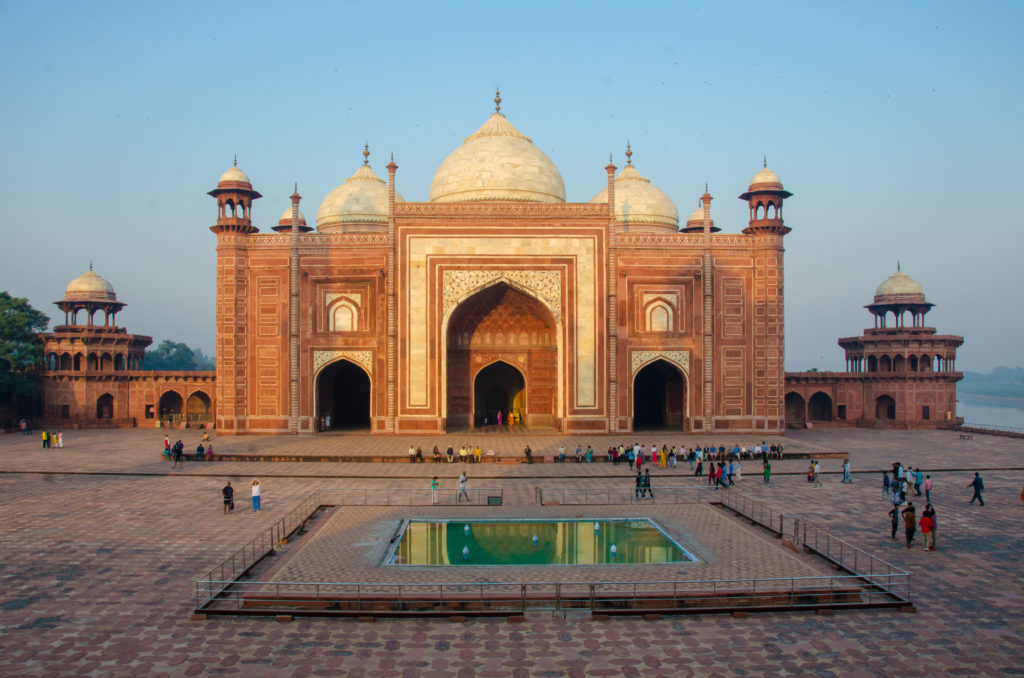
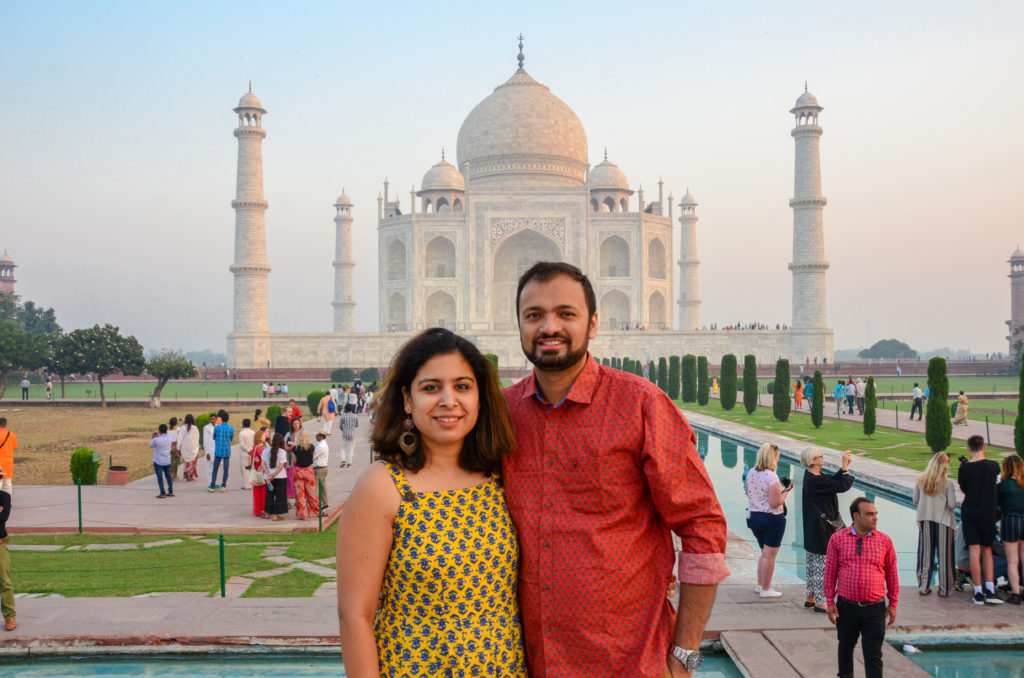
The Taj Mahal Complex has several other significant buildings. The most prominent are the identical buildings flanking the Taj Mahal on the east and west side. Symmetry is an important aspect of Mughal architecture hence while the building on the western side is a mosque, architects believe that the identical structure on the eastern side was built only for architectural balance and may have served as a guest house.
- As mentioned before to avoid the heat and the crowds an early morning trip is recommended. And we mean early, early – like 6.00 AM. There is still a crowd, but the lines are not that long. There is no parking near the Taj Mahal, so take a taxi or a rickshaw to the entrance.
- You will go through airport-style security. Water bottles are not allowed. If you buy the “Foreign Visitor’ ticket, bottled water would be provided to you as part of the ticket. For more information and ticket and visiting hours, go here
- The entry to the actual tomb is highly managed by the local security and no photography is allowed inside the structure. Due to the crowds, there is hardly get any time to inside the structure as you are shunted from the chamber to the another. There is no limit to how much time you can spend on the grounds of the Taj Mahal complex. So walk around, take lots of pictures and take your time appreciating this stunning example of Indo-Islamic architecture that is on the roster of UNESCO World Heritage sites.
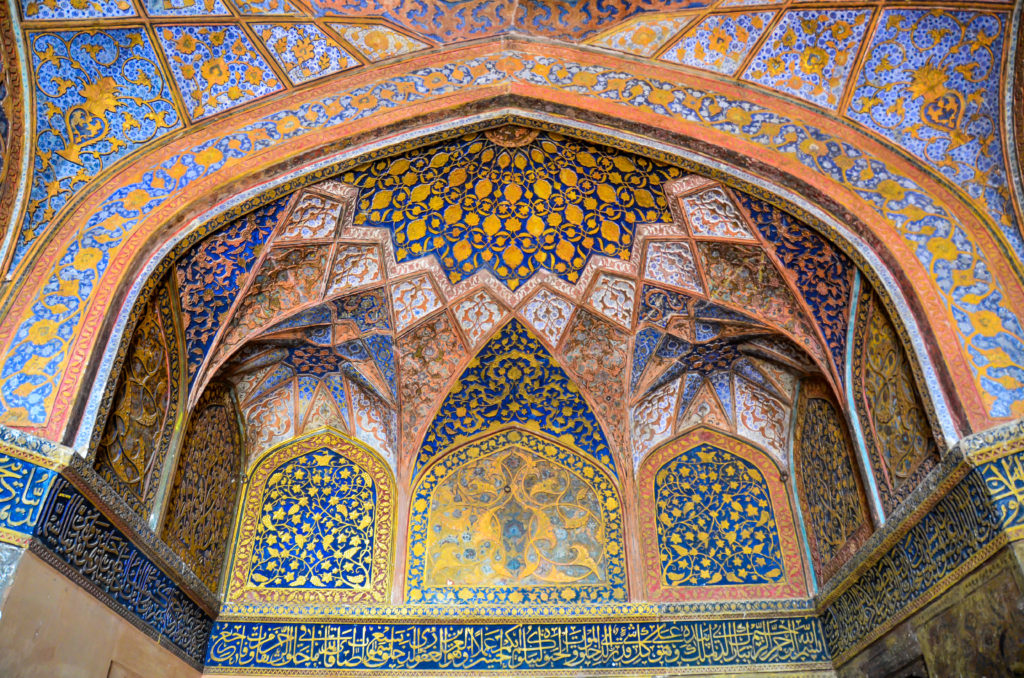
Spend the afternoon rambling in the grounds of Akbar’s Tomb
Akbar’s tomb is in Sikandra – a short drive from the heart of Agra city. While often skipped by the tourist circuit, I highly recommend a visit. The sprawling gardens, the deers prancing on the property, the stunning design of the 4 arched gates that surround the mausoleum; there is much to be admired here.
As you enter the complex you pass a small building with intricately carved doors, windows, and walls. This is the Kanch (glass) Mahal used as harem quarters by Emperor Jahangir. A walk down tree-lined avenues will bring you in front of the grand South Gate. Made of red sandstone and inlaid with cut marble, this is a grand example of Mughal architecture and craftsmanship.
As you exit through the South Gate, straight down the stone walkway is the front façade of the Tomb. Cooling water runs through the long path down to the tomb and the vast green expanse lay on either side. We were lucky enough to spot peacocks and deers running around in the gardens.
For those who are not familiar with Mughal history, Akbar the Great, was one of the most important emperors of the Mughal Empire. He was known for his military conquests, political alliances, financial and religious reform.
Akbar’s cenotaph is placed in a giant cavernous room that is accessible by a tunnel-like corridor. The actual body is buried deep in the ground ( well as per historians, nothing remains there anymore as the actual grave was destroyed during a Hindu rebellion). The outer chamber of the tomb is covered in brightly painted frescos with geometric, floral and calligraphic patterns. The chamber entrance itself is made of a beautiful marble ‘jali’ work, much like the one found in Salim Chishti’s tomb.
Significantly less crowded, Akbar’s tomb allows you the time to ramble around the property and pose for dozens of pictures against marble and stone arches.
For information on tickets and timings go here.
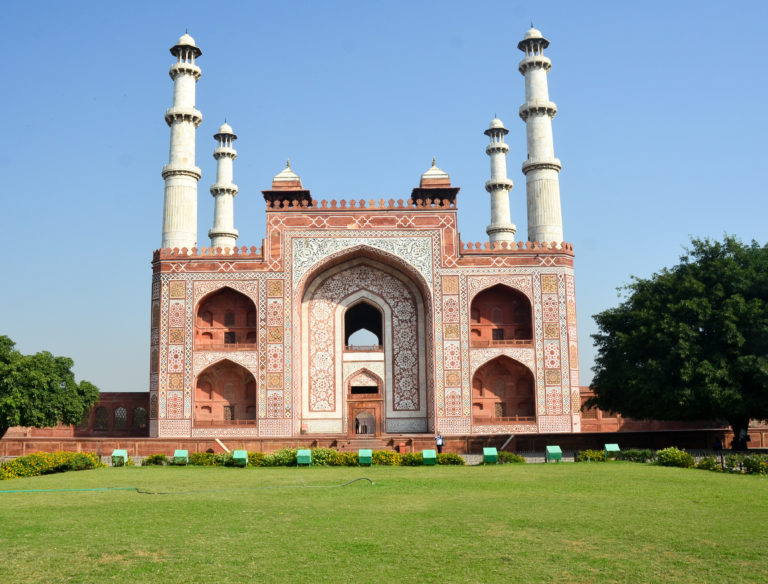
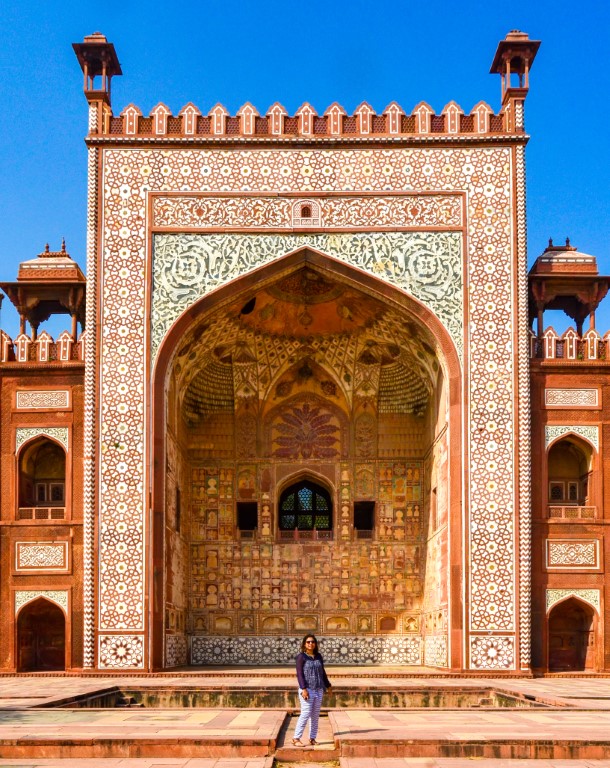
Evening on the ramparts of Agra Fort
Close the day by spending an evening at the Agra Fort. Agra was Akbar’s city and was the center of the Mughal Empire over a hundred years. Agra Fort was not only an important military defense hold but also represented the might and prestige of the Mughal Empire.
Today visitors can view a limited section of this UNESCO World Heritage Site. The remaining area is occupied by the Indian military.
Agra Fort is defined by double ramparts across its entire perimeter. The entrance of the fort is from the grand Lahore Gate. The much grander Delhi Gate is unfortunately closed to the public.
Meander through Jehangir’s Palace and the harem quarters. Enjoy the erstwhile beauty of Khas Mahal where Emperor Shah Jahan stayed with his wife Mumtaz. The intricate marble and gem work on the walls is all but destroyed by invaders and looters, and the Britishers sealed the deal by melting the gold of the walls.
Shah Jahan was famously confined in Musamman Burj by his son for eight years. The only solace was the view of the Taj Mahal from his chambers so that he could see the resting place of Mumtaz Mahal in his last days.
One of the major highlights of the Agra Fort is the grand Diwan-e-Am with its many marble arches and columns. One can easily spend several hours here.
The Agra Fort also has a light and sound show after sunset; stay for that if you don’t have any plans for the evening.
For tickets and visiting information,
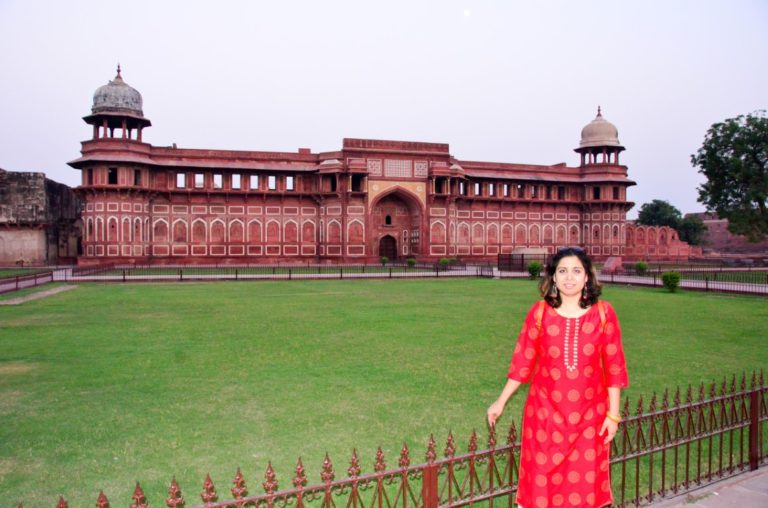
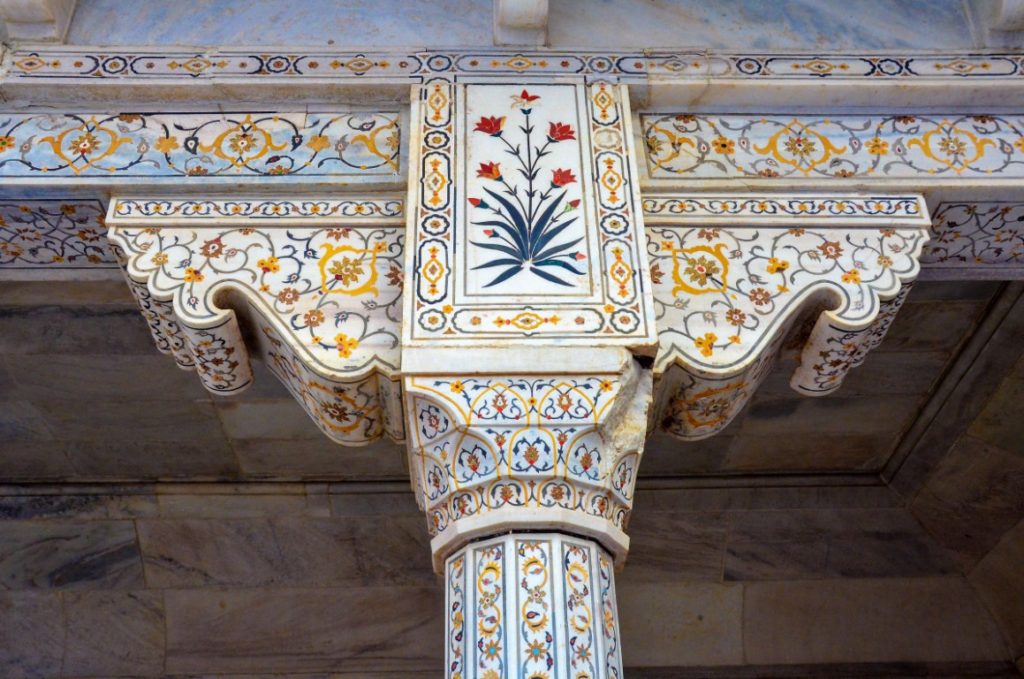
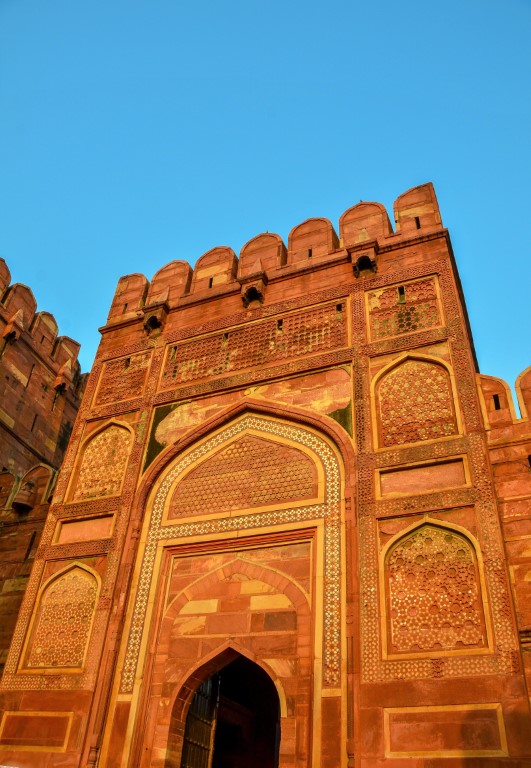
Meal Options
Traditional Mughlai cuisine from the days of the Akbar rules still survives in the kitchens of Agra. The recipes have been preserved and passed through generations of chefs and have made it to the menu of many, many restaurants. To sample great food, look up Zomato for the most recent recommendations. Pinch of Spice, Peshawari @ ITC Mughal, and Dawat-e-Nawab are a few fan favorites.
Another local favorite is the Petha, a sweetmeat made from pumpkins that is available everywhere. There is no way you can miss the advertisement by the local Petha company, Pannchi. Eating petha is like eating a sticky spoon of sugar or a soft taffy. It’s a bit of an acquired taste but hey, one should try everything once right?
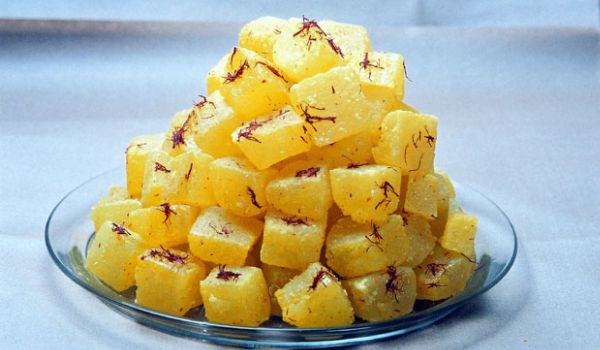
Day 2: Fatehpur Sikri and Mehtab Bagh
If you are in Agra for more than a day, then you must make the day trip to Fatehpur Sikri. This town was the short-lived capital of the Mughal Empire from 1571 to 1585.
Founded by Akbar (who seems to have made the habit of setting up new cities 
Getting to Fatehpur Sikri
When driving in from Agra, you will enter Fatehpur Sikri through Agra Gate (duh!). The access to the Fatehpur Sikri complex is managed by UP tourism and one is be required to park one’s private vehicles at the parking lot near the fort entrance. A government shuttle bus transports visitors to the Sikri palace complex for a minor fee. These tickets are different from the ones that require access to the monument. There are two destination stops for the shuttle service: the Diwan-e-Am and Jodha Bhai entry gates. ( see below). We got off at the entrance near the Diwan-e-Am.
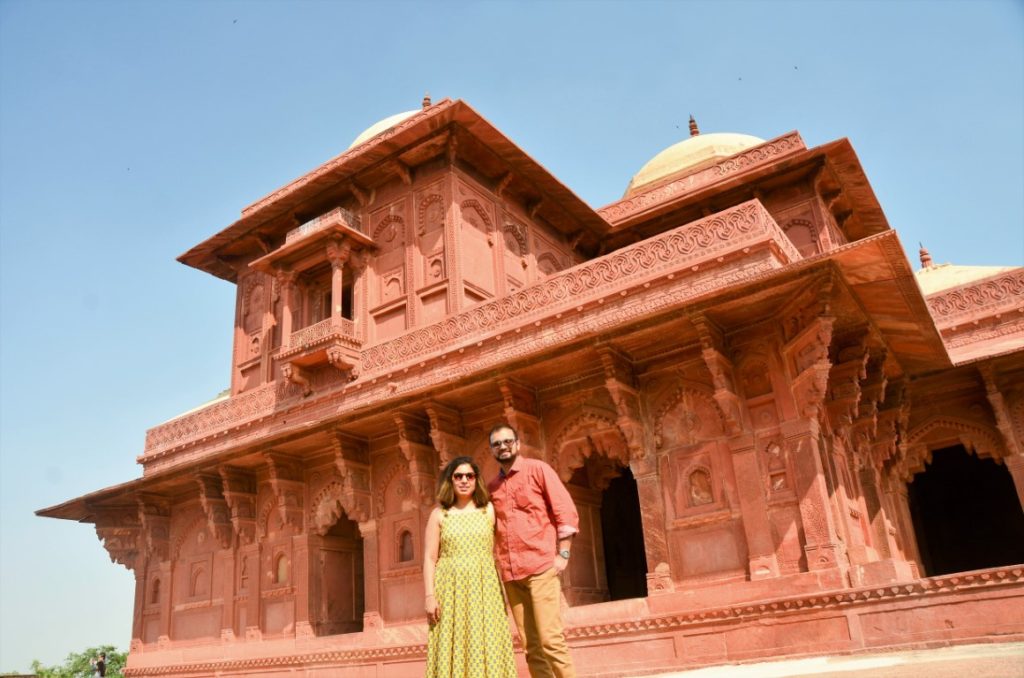
The Palace Complex
We started our exploration from Diwan-e-Am or the ‘Hall of Audience” where the emperor would have listened to the appeals and complaints of the common man. As you pass through the Diwan-e-Am, you enter a giant yard with multiple palace buildings that served queen residences, palace offices, stables for the horses etc.
Some of the popular structures to check out are:
Birbal’s palace is an excellent example of Indo-Islamic architecture. The domed minarets remind one of the Hindu forts in Rajasthan but Islamic motifs engraved into the red sandstone walls are the hallmark of Mughal design. Birbal was Akbar’s close advisor and the only courtier to get residence in Akbar’s Palace.
Panch Mahal with its five floors and airy layout is sure to catch one’s eye. It is built next to the harem and must have been the resting place for queens and escorts. All five floors are supported by a large number of columns. The open layout creates excellent ventilation which would have provided reprieve in the hot summer months.
Jodha Bai’s Palace – Akbar had several wives, but Jodha Bai was his first Hindu wife. She was also the first in the line of Rajput princess that Akbar would go on to marry to strengthen political alliances and ensure his supremacy all over India. Akbar and Jodha’s relationship has often caught the imagination of historians and writers, and it has been recently captured in a famous Bollywood movie, Jodha Akbar
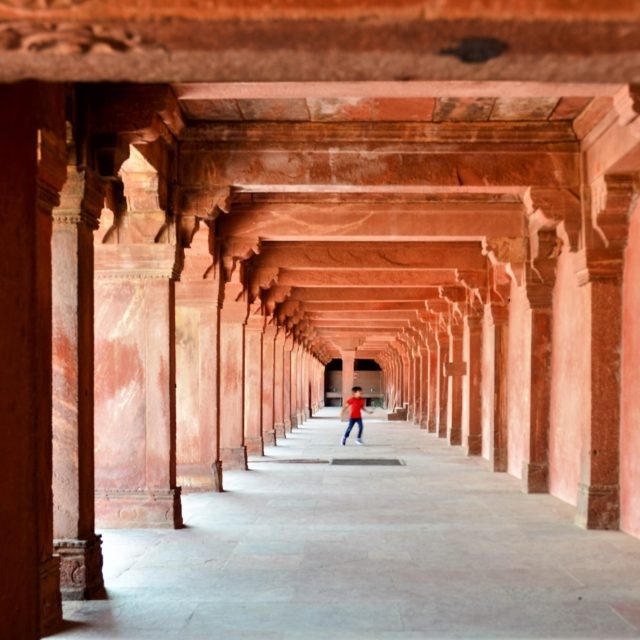
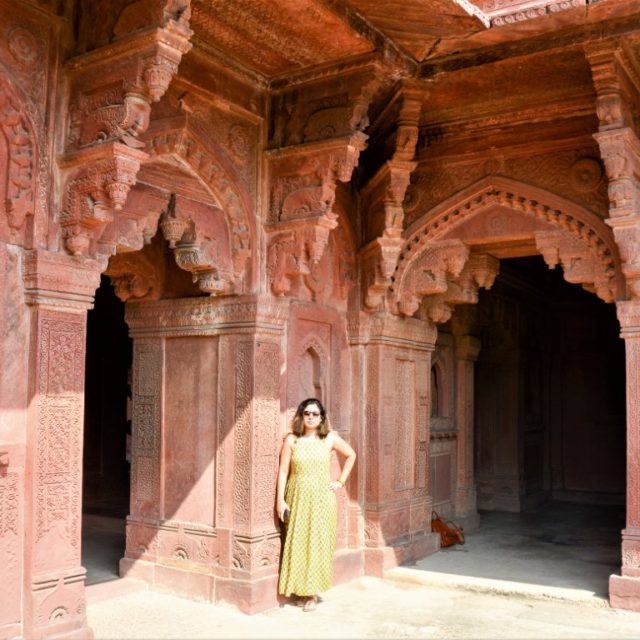
Jama Masjid
As you exit from the palace complex, you will find yourself on the short road to Jama Masjid. This is an active place of worship so you have to follow the local customs, such as leaving your footwear outside the entrance.
Climb up the stairs of the Badshahi Darwaza to enter the mosque courtyard. The Jama Masjid is home to the mosque itself and the Tomb of Salim Chishti. Arched corridors line the large courtyard.
As you walk through the corridors, you will be accosted by folks asking you to buy a ‘Chadar’ for the tomb. The tomb of Salim Chishti continues to be an important place of pilgrimage for Muslims. As per tradition worshippers will put a “chadar” over the tomb or tie a knot in the latticework and ask for their wish to be fulfilled – especially the wish for a child. This is a matter of faith and its entirely up to you if you want to do to this.
The tomb itself is a fine example of Mughal craftsmanship. Made of marble lattices on all sides, this white structure stands out in the otherwise red sandstone of the courtyard.
Right across is the tomb is the Bulund Darwaza or the Gate of Victory. This is the crown jewel of Fatepur Sikri. Higher than any other gate in the entire fort it is made of red sandstone it reaches 50 feet into the sky. The gate commemorates Akbar’s conquest of Uttar Pradesh and Gujarat.

Bulund Darwaza/Gate of Victory
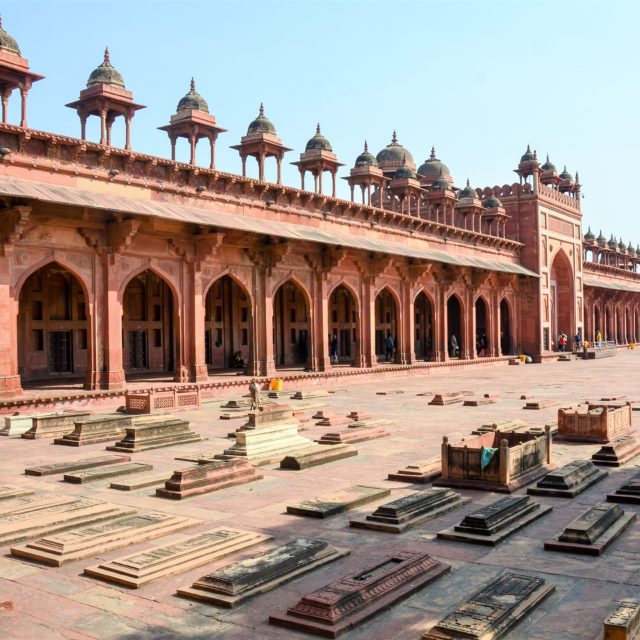
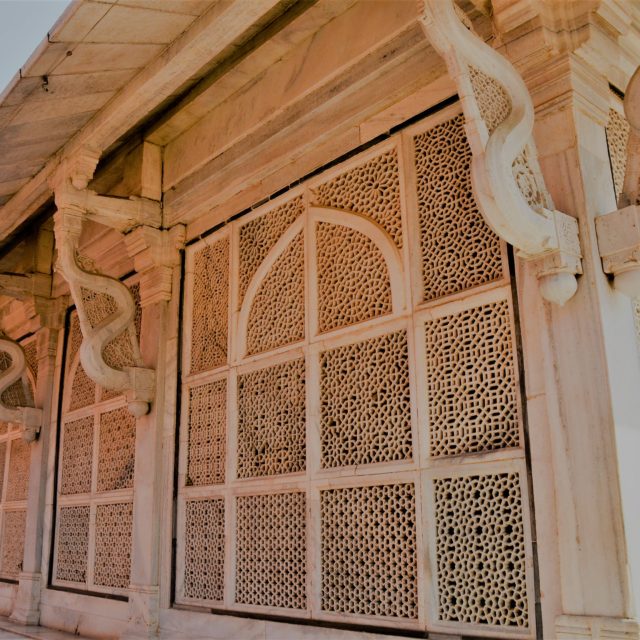
Sunset at Mehtab Bagh
Made ridiculously popular by Instagrammers, the sunset view of the Taj Mahal from Mehtab Bagh has become an essential bucket list item for any visitor to Agra. You don’t have to deal with the crowds as the sun lights up the sky over the Taj Mahal in hues of pink, orange and yellow.
‘Bagh’ means garden in Urdu and Mehtab Bagh was one of the royal Mughal gardens dotting Agra in the days of the empire. Victim of numerous floodings since then, Mehtab Bagh continues to go through extensive restoration by Archeological Society of India.
Disclaimer: So we didn’t actually go to this place coz we were very tired and just wanted to stay in for the evening but if I am ever in Agra again, then we are totally making the visit!
So have you ever visited Agra ? What has your experience been like? What else would you recommend? Please go ahead and share in comments.
For more on travel in India, go here.


